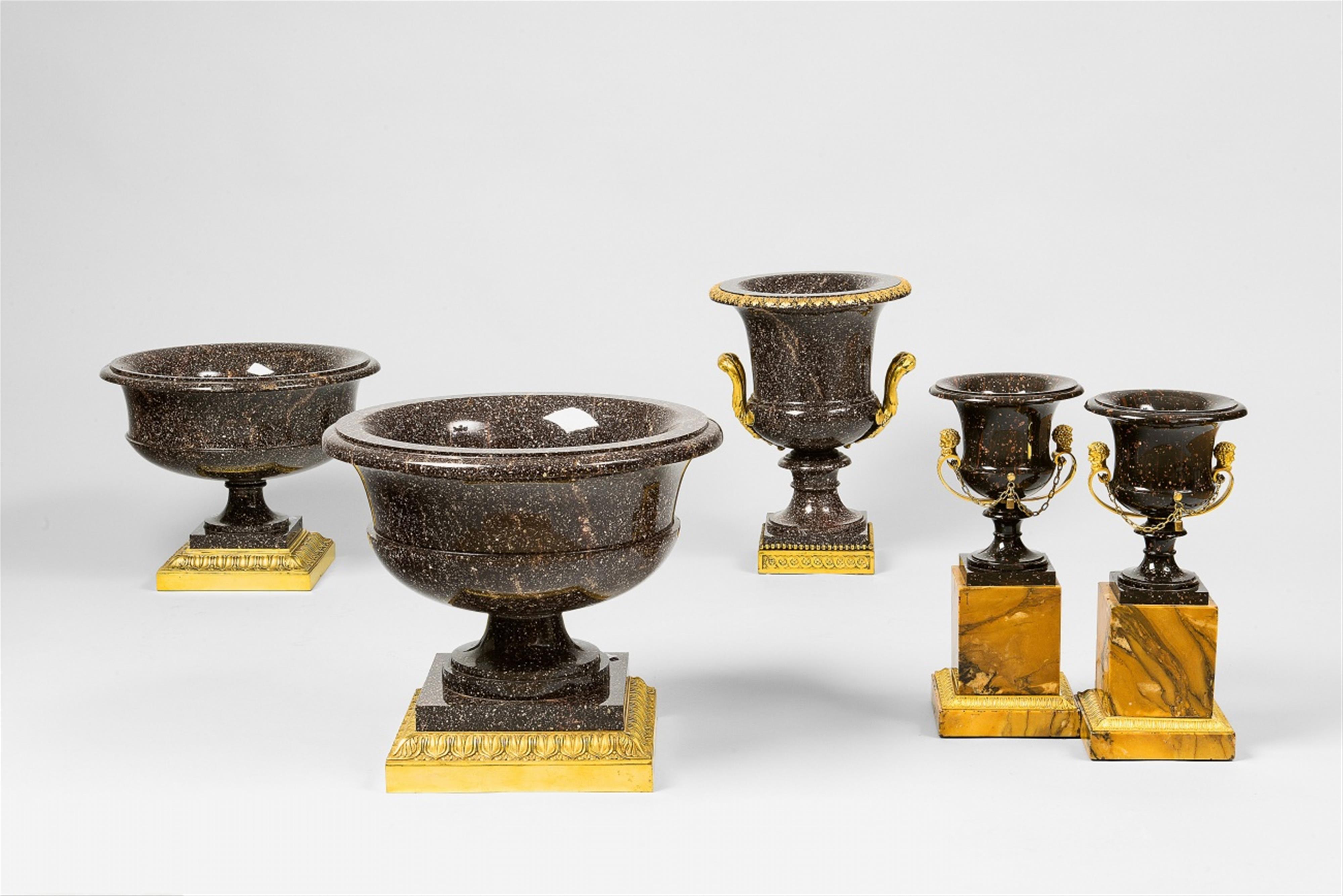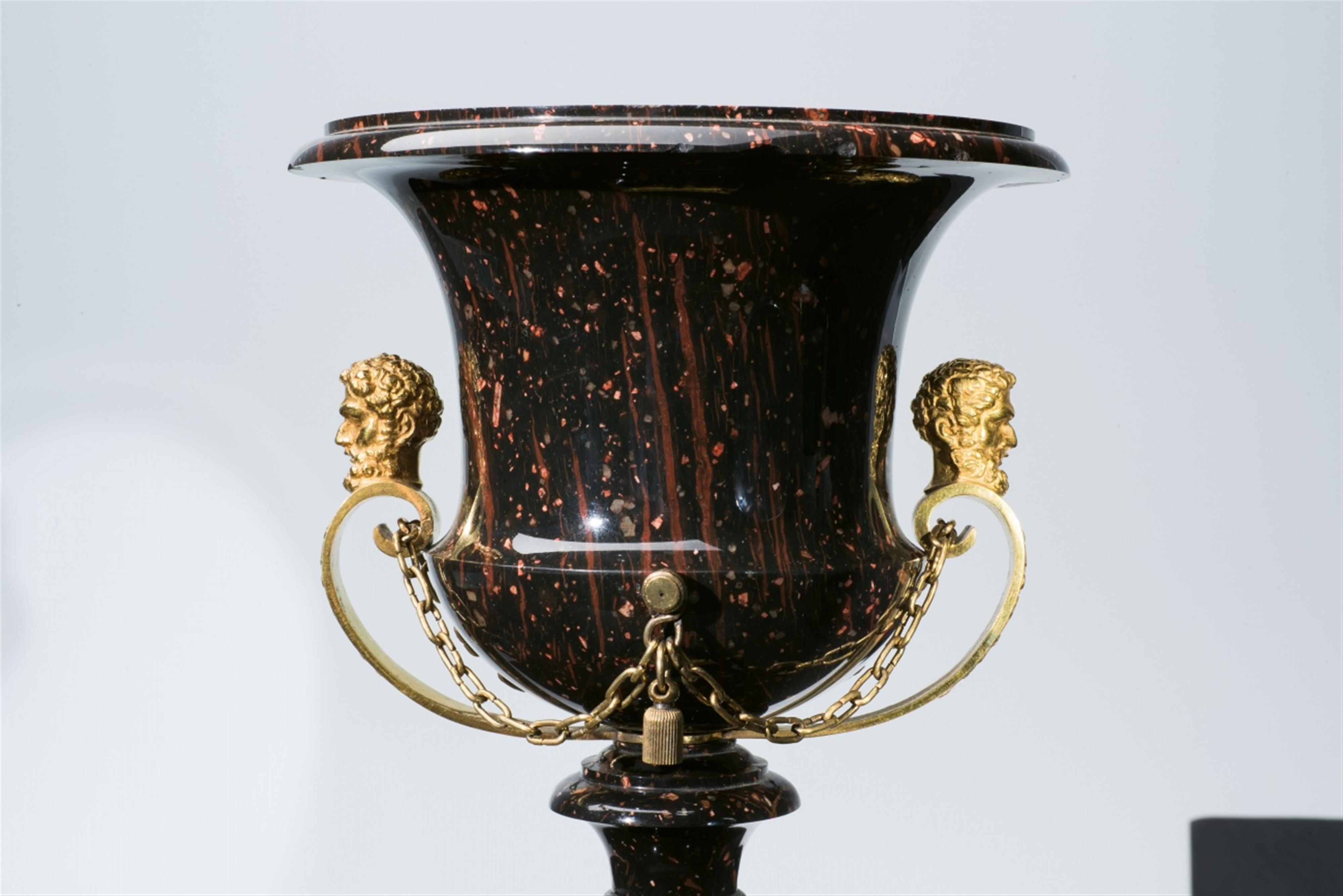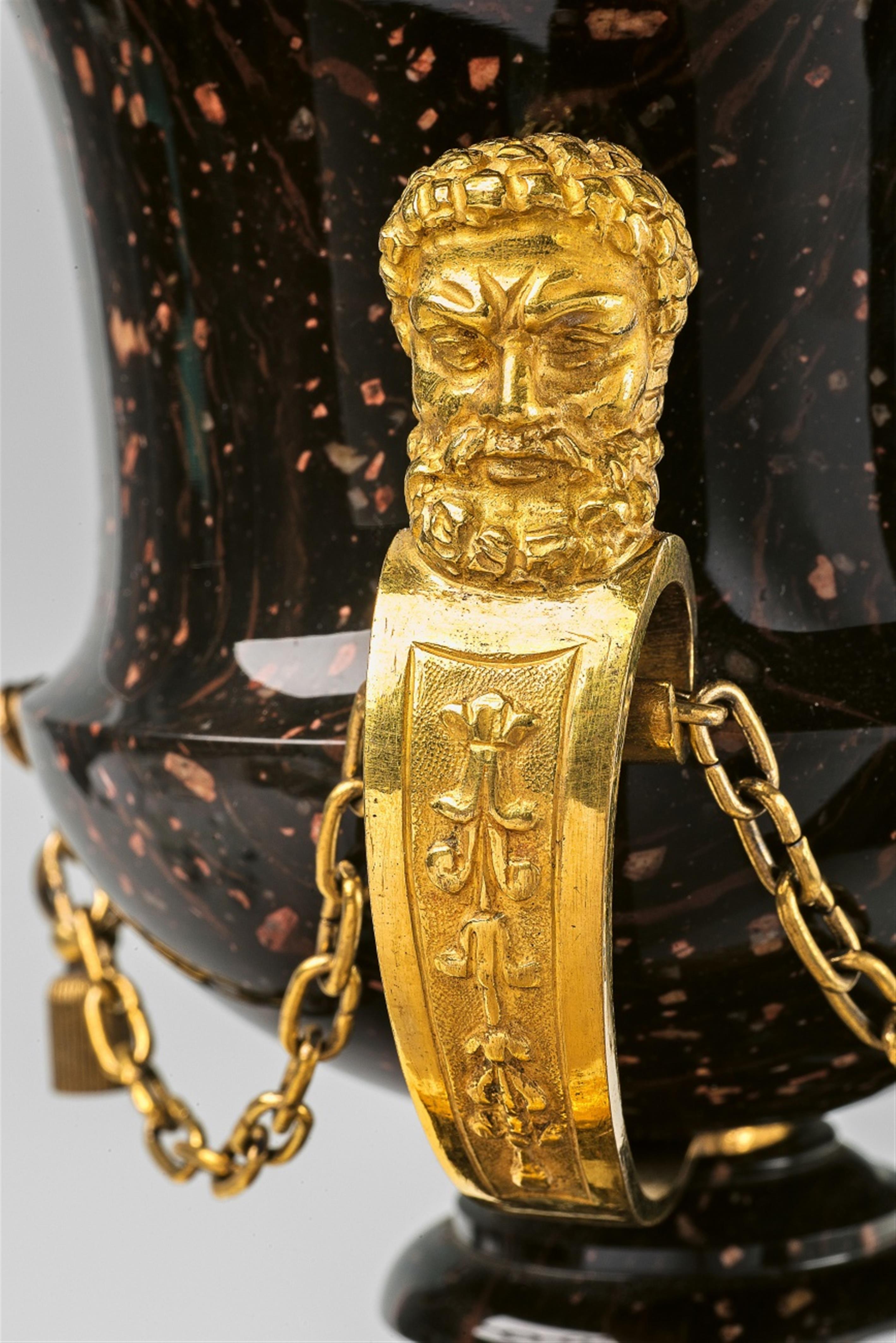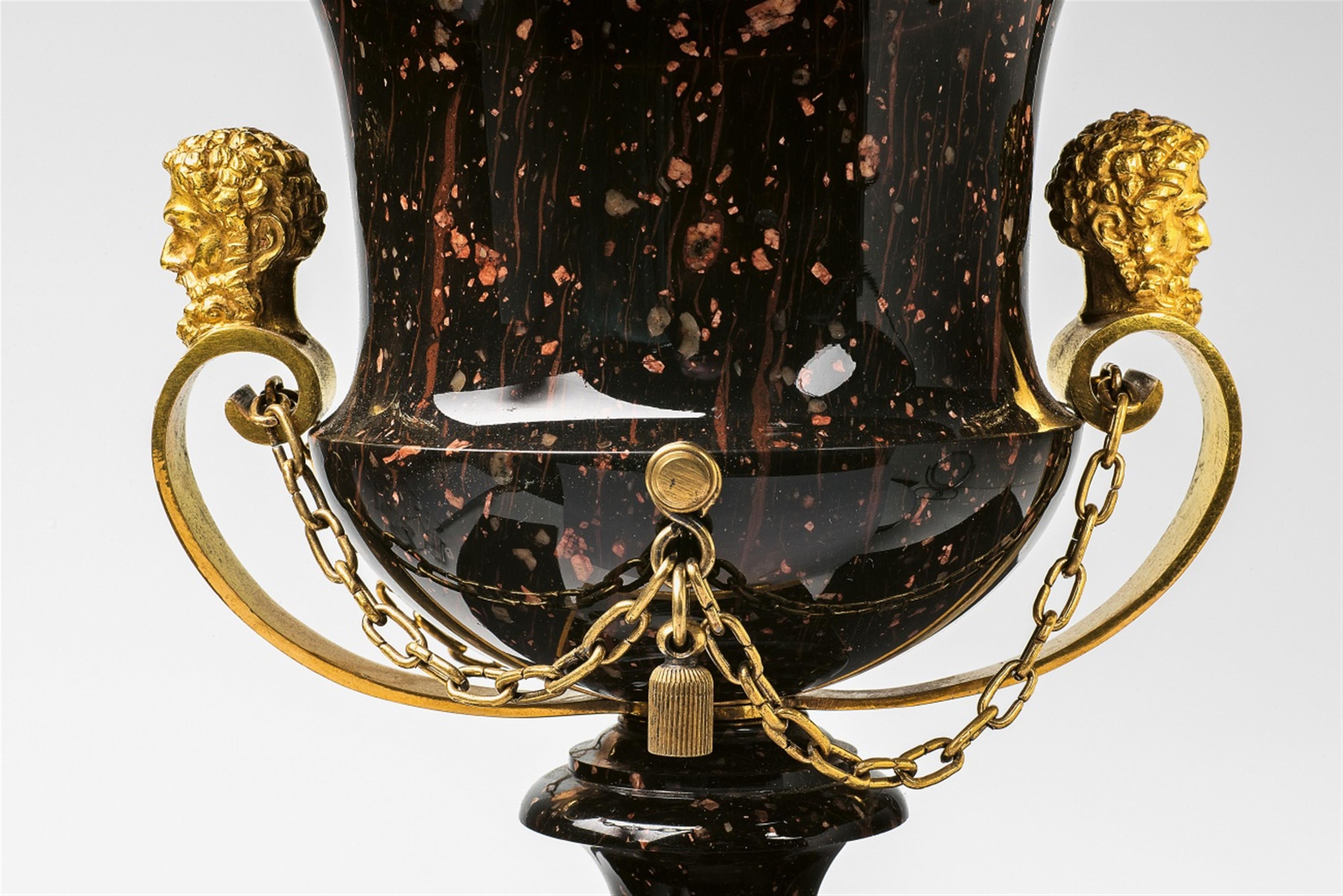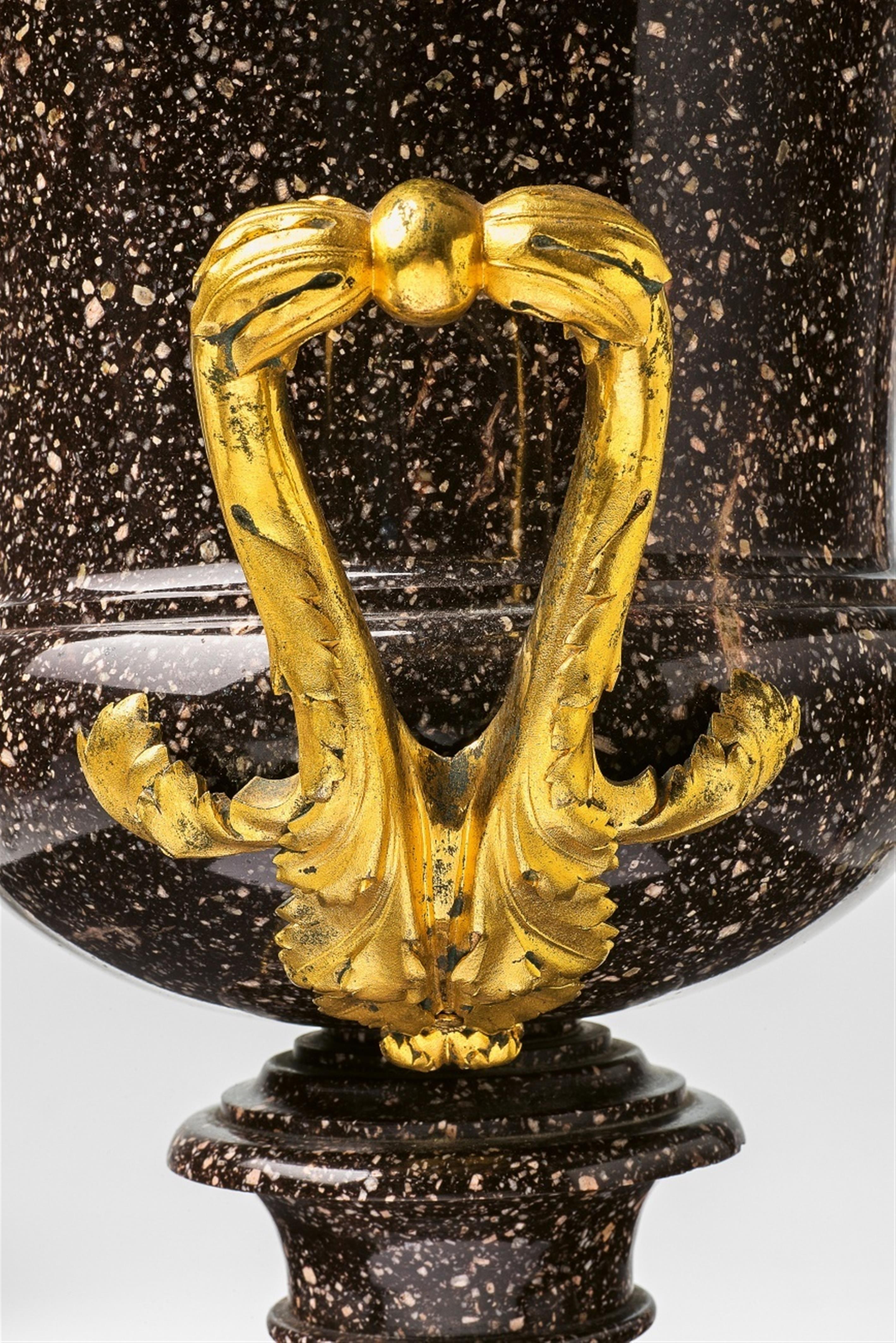A rare set of five ormolu-mounted carved porphyry krater vases
One large dish on a separate foot and bronze plinth with Neoclassical foliate relief, H ca. 32.5, D ca. 37.5 cm.
One dish of identical form on a separate foot and bronze plinth with Neoclassical foliate borders, H ca. 27.5, D ca. 34 cm.
An urn formed like the Medici vase on a separate foot, with a bronze grapevine border, handles, and base, H ca. 35 cm.
A pair of small Medici vases on bronze-mounted yellow marble bases, with bronze handles, H ca. 33 und 34 cm. Minor rim chips.
Italy, 19th C.
Italian porphyry was not only imported from Egypt, but also found in the Etschtal Alps, north of Bozen. Despite this, monumental pieces like these are still exceptionally rare. A similar pair of candelabra mounted in bronze by Luigi Valadier in 1774 is kept in the Metropolitan Museum in New York.
The inspiration for these vase forms was drawn from two ancient Roman vases celebrated for their perfection in the Neoclassical Napoleonic era. The first being the so-called “Medici vase”, a Roman marble vase from the 1st century A.D., which was recorded in the inventories of the Medici family since 1598 and is now housed in the Uffizi in Florence. The other is the so-called “Warwick vase”, from the 2nd century, which was found in Italy in 1771 and published by Piranesi. It was kept in Warwick castle but is now housed in the Burrel Collection in Glasgow.
Literature
Cf. Colle/Griseri/Valeriani, Bronzi Decorativi in Italia, Milan 2001, no. 60, p. 216 f.

